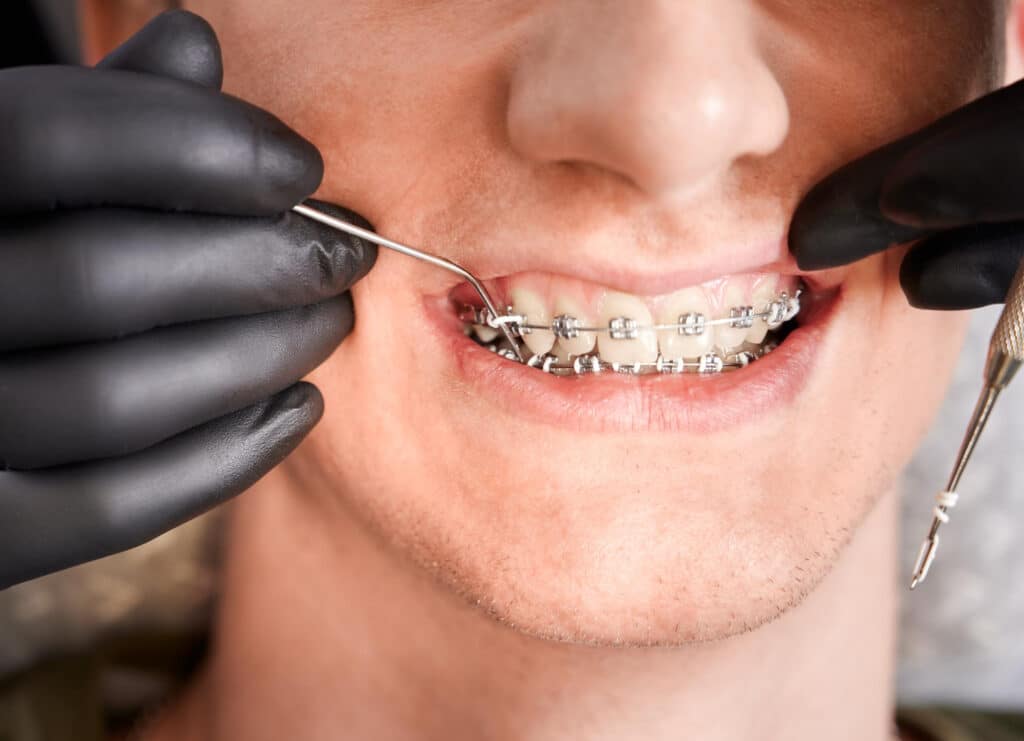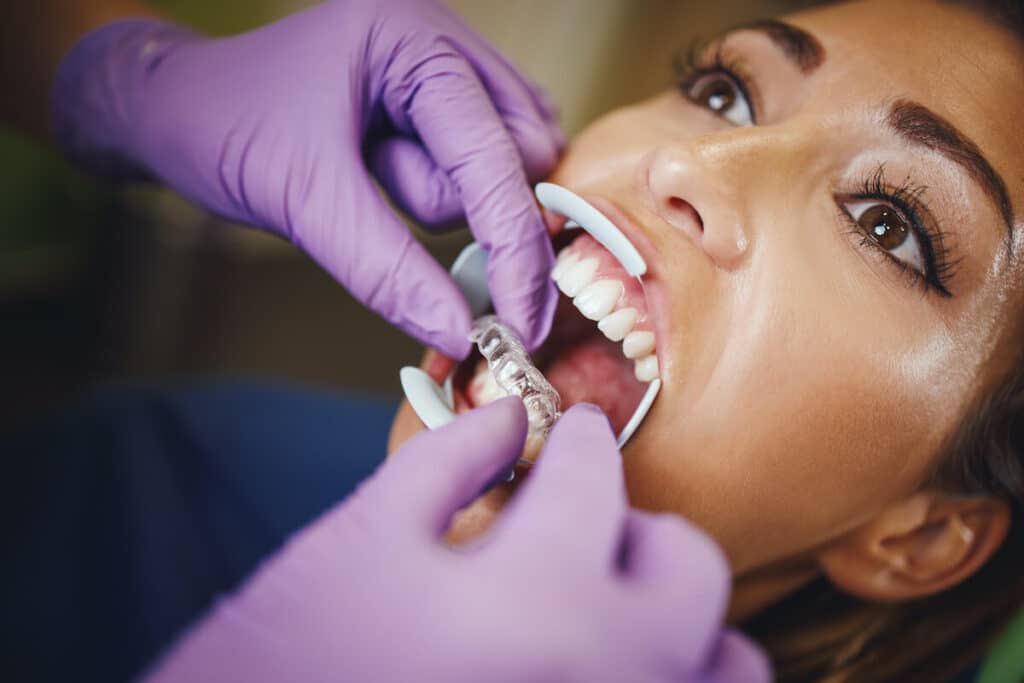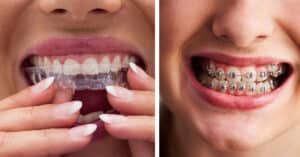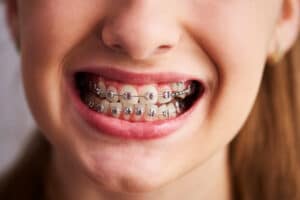Braces Timeline Explained: From First Appointment to Retainer Stage
Getting braces can feel overwhelming when you don’t know what to expect. The journey from crooked teeth to a perfect smile involves multiple stages, each playing a crucial role in your transformation. Understanding this timeline helps you feel confident and prepared for every step ahead.
The difference between guessing and actually knowing what lies ahead makes all the difference in your orthodontic experience. When you understand the process, you can better prepare mentally, physically, and practically for each phase. This knowledge transforms anxiety into anticipation and uncertainty into excitement.
Dental braces represent more than just straight teeth—they’re your roadmap to long-term oral health. Properly aligned teeth prevent future dental problems, improve your bite, and boost your confidence for years to come. Every stage of your braces timeline contributes to this lasting investment in your smile.
The First Appointment: Mapping the Smile Journey
Consultation & Evaluation
Your orthodontist will examine your teeth, jaw alignment, and bite pattern during this comprehensive evaluation. They’ll look for crowding, spacing issues, overbites, underbites, and any other alignment concerns that need correction. This thorough assessment helps determine whether you’re a good candidate for braces and what type of treatment will work best for your specific needs.
X-Rays & Impressions
Digital X-rays and 3D imaging provide your orthodontist with a complete picture of your teeth, roots, and jaw structure. These detailed images reveal hidden issues like impacted teeth or bone density problems that aren’t visible during a regular examination. Impressions or digital scans create precise models of your teeth, allowing your orthodontist to plan every movement with accuracy.
Setting Expectations
Based on your evaluation and imaging, your orthodontist will create a personalized orthodontics treatment plan tailored to your unique needs. You’ll receive a realistic timeline for your treatment, typically ranging from 18 to 36 months depending on the complexity of your case. This plan includes expected milestones, appointment schedules, and what you can expect to see at each stage of your journey.

Preparing for Braces: Before the Big Day
Dental Checkups & Cleanings
Your teeth and gums must be in excellent health before braces can be placed safely and effectively. Any cavities need filling, and gum disease requires treatment to prevent complications during orthodontic treatment. A thorough cleaning removes plaque and tartar buildup, creating the ideal foundation for your braces to do their work.
Choosing the Right Braces
Traditional metal braces offer durability and effectiveness for complex cases, while ceramic braces provide a more discreet appearance. Lingual braces attach to the back of your teeth for complete invisibility, though they may require a longer adjustment period. Clear aligners work well for mild to moderate alignment issues and offer the convenience of removability for eating and cleaning.
Lifestyle Prep
Start adjusting your diet before getting braces by avoiding hard, sticky, or chewy foods that can damage brackets and wires. Stock up on soft foods like yogurt, soup, and smoothies for the first few days after placement when your teeth may be tender. Consider investing in orthodontic-friendly oral hygiene tools like interdental brushes and wax for comfort.
Getting Braces On: What Really Happens
Step-by-Step Placement
The process begins with cleaning and conditioning your teeth to ensure proper bracket adhesion. Your orthodontist carefully positions each bracket using special dental cement, then threads the archwire through the brackets and secures it with elastic bands or metal ties.
Comfort Tips
Mild soreness and pressure for the first few days after getting braces is completely normal as your teeth begin to adjust. Over-the-counter pain relievers and soft foods can help manage this discomfort, which typically subsides within a week. However, severe pain, loose brackets, or protruding wires require immediate attention from your orthodontist.
Immediate Do’s and Don’ts
Stick to soft foods for the first few days and avoid anything hard, sticky, or crunchy that could damage your new braces. Brush gently but thoroughly after every meal, using fluoride toothpaste and taking extra time around brackets and wires. Keep orthodontic wax handy to cover any brackets or wires that might irritate your cheeks or lips.
Adjustment Appointments: The Maintenance Phase
Tightening and Tweaking
Regular adjustment appointments every four to eight weeks allow your orthodontist to gradually increase pressure on your teeth, guiding them into their proper positions. During these visits, wires may be changed, brackets repositioned, or elastic bands replaced to continue the movement process.
Monitoring Progress
Your orthodontist will take photos and measurements at each appointment to document your progress and make any necessary treatment modifications. This careful monitoring ensures your teeth are moving according to plan and helps identify any issues early. You’ll often be amazed at how much change occurs between appointments, even when daily progress seems minimal.
Managing Discomfort
The day or two following an adjustment appointment may bring mild soreness as your teeth respond to new pressure. Rinsing with warm salt water can provide natural pain relief, while over-the-counter medications help manage any discomfort. Eating softer foods immediately after adjustments gives your teeth a chance to adapt without additional stress.

Oral Hygiene While Wearing Braces
Special Tools
Traditional flossing becomes more challenging with braces, making floss threaders essential for reaching between teeth and under wires. Interdental brushes help clean around brackets and wires where regular toothbrushes can’t reach effectively. Water flossers provide an excellent complement to traditional brushing and flossing by removing food particles and plaque from hard-to-reach areas.
Diet Modifications
Avoid hard foods like nuts, ice, and hard candies that can crack or loosen brackets and bend wires. Sticky foods such as caramel, gum, and taffy can pull brackets off your teeth or get stuck in your braces, requiring emergency visits. Cut corn off the cob, slice apples into pieces, and avoid biting directly into hard or chewy foods with your front teeth.
Plaque Patrol
Poor oral hygiene with braces can lead to permanent white spots on your teeth, cavities, and gum disease that may require additional treatment. Plaque buildup around brackets creates an ideal environment for harmful bacteria to thrive, potentially compromising your orthodontic results. Consistent, thorough cleaning throughout your treatment ensures you’ll reveal healthy, beautiful teeth when your braces come off.
The Day Braces Come Off: Big Reveal, Bigger Care
Debonding Process
The removal process involves carefully detaching each bracket from your teeth using special pliers that break the adhesive bond. Your orthodontist will then remove any remaining cement residue and polish your teeth to restore their smooth surface. The entire appointment typically takes about an hour, and you’ll be amazed at how smooth your teeth feel afterward.
Post-Braces Smile Check
Your orthodontist will carefully examine your bite and tooth alignment to ensure everything meets the treatment goals established at the beginning. Any minor adjustments needed can often be addressed with short-term retainer modifications or brief additional treatment. This final check ensures your new smile will function properly and look beautiful for years to come.
Celebrating Success
The moment you see your new smile in the mirror marks the culmination of months or years of patience and care. Most patients experience an immediate confidence boost and can’t stop smiling at their transformation. This is the perfect time to schedule professional photos or simply enjoy showing off your beautiful new smile to family and friends.
Retainer Stage: Holding Onto Progress
Why Retainers Matter
Your teeth have a natural tendency to return to their original positions after braces removal, making retainers absolutely essential for maintaining your results. The first few months are particularly critical, as your teeth and supporting structures need time to stabilize in their new positions.
Different Types of Retainers
Removable retainers offer convenience for eating and cleaning but require discipline to wear as prescribed by your orthodontist. Fixed or bonded retainers consist of a thin wire permanently attached to the back of your teeth, providing constant retention without relying on patient compliance.
Daily Care for Retainers
Clean removable retainers daily with a soft toothbrush and mild soap, avoiding hot water that can warp the plastic. Follow your orthodontist’s wearing schedule carefully, typically full-time initially, then gradually transitioning to nighttime-only wear. Expect to replace removable retainers every few years due to normal wear, and attend regular checkups to monitor both your retainers and your smile stability.

How Villa Orthodontics Supports You Through Every Stage
Personalized Care
At Villa Orthodontics, every patient receives a customized treatment plan designed specifically for their unique orthodontic needs and lifestyle. Dr. Richard Villa and his team understand that no two smiles are alike, which is why they take time to create individualized approaches that deliver optimal results.
Advanced Technology
Villa Orthodontics utilizes cutting-edge technology including digital imaging, 3D treatment planning, and modern bracket systems that reduce treatment time and increase comfort. These advanced tools allow for more precise tooth movement and fewer emergency appointments, making your orthodontic journey as smooth as possible.
Patient Support System
The Villa Orthodontics team provides ongoing support and education throughout your entire treatment journey, ensuring you feel confident and informed at every stage. You’ll receive detailed instructions for care, prompt responses to any concerns, and encouragement to help you stay motivated during treatment. This comprehensive support system helps ensure your success from the first consultation through the final retainer check.
Your Timeline Is Worth the Journey
Braces represent a step-by-step path to lifelong results that extend far beyond dental cosmetic improvements. Each stage of your orthodontic timeline, from initial consultation to final retainer care, plays a vital role in achieving and maintaining your perfect smile. The months of treatment may seem long, but the decades of benefits make every appointment worthwhile.
Understanding what to expect at each phase helps you approach orthodontic treatment with confidence and realistic expectations. When you know the journey ahead, you can better prepare for success and appreciate the gradual transformation taking place. Trust in experienced professionals like the team at Villa Orthodontics ensures you receive expert guidance, comfort, and lasting results throughout your entire orthodontic adventure.
https://www.google.com/maps?cid=10799094335138242310


